Mogan Mountain: Discover the Hidden Gem of Zhejiang’s Natural Beauty
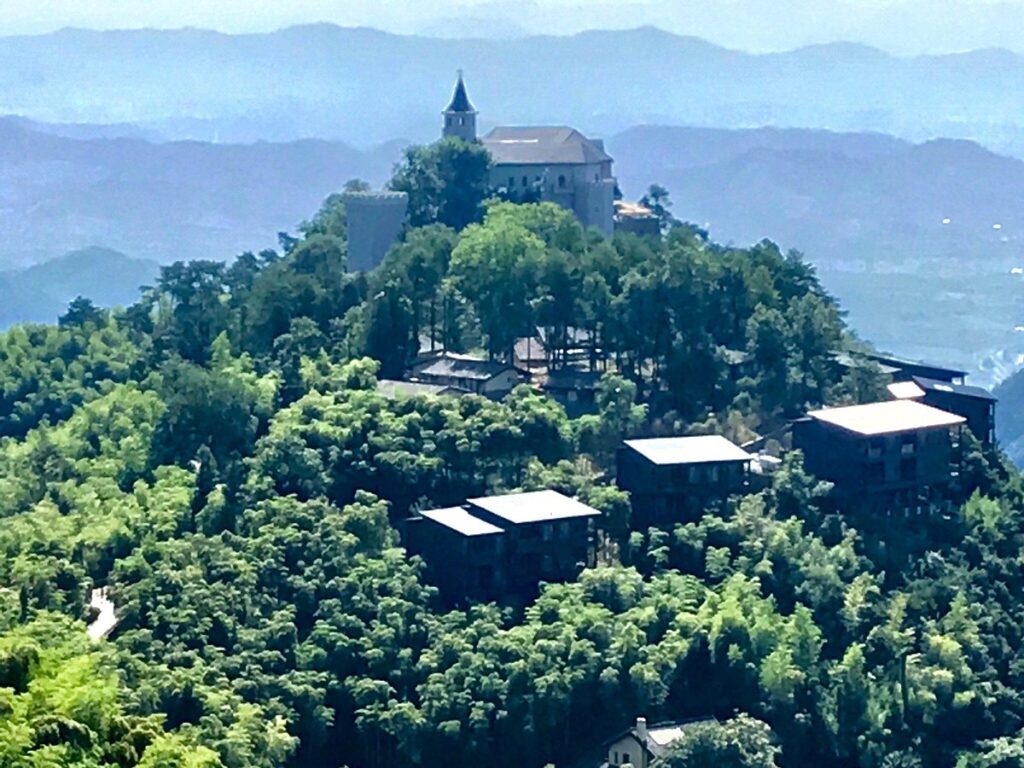
An Essential Guide to Visiting Mogan Mountain
Nestled in the lush embrace of Zhejiang Province, Mogan Mountain (莫干山) stands as a tranquil escape just a few hours from the bustling metropolis of Shanghai. Renowned for its stunning natural beauty, this mountainous retreat offers a perfect blend of outdoor adventure and cultural exploration. With its mist-shrouded peaks, winding hiking trails, and charming historic villas, Mogan Mountain invites travelers to unwind and reconnect with nature while immersing themselves in the rich tapestry of Chinese history.
Whether you’re a seasoned hiker seeking the thrill of rugged trails or a casual visitor wanting to soak in the serene landscapes, Mogan Mountain caters to all. The crisp mountain air, vibrant autumn foliage, and the gentle rustle of bamboo forests create an enchanting backdrop for unforgettable photographs and cherished memories. With a plethora of activities available, from hiking and mountain biking to leisurely strolls through quaint villages, there’s something for everyone in this picturesque haven.
As you plan your visit, prepare to be captivated not only by the breathtaking views but also by the unique experiences that await you. From discovering Mao Zedong’s temporary residence to enjoying local delicacies at nearby eateries, Mogan Mountain promises an enriching adventure that transcends the ordinary. So, lace up your hiking boots, grab your camera, and get ready for a journey to one of China’s hidden gems.
In This Guide
- An Essential Guide to Visiting Mogan Mountain
- The Rich History and Legends of Mogan Mountain
- Main Highlights: What You Absolutely Can’t Miss
- Planning Your Visit: A Practical Guide
- Tickets: Prices, Booking, and Tips
- How to Get There: A Complete Transportation Guide
- Local Cuisine and Accommodation Nearby
- Frequently Asked Questions
- Final Thoughts on Your Trip
The Rich History and Legends of Mogan Mountain
Mogan Mountain, nestled in the verdant embrace of Deqing County, has a rich tapestry of history and legends woven throughout its majestic landscape. Known as the “Emerald Mountain,” it has been a cherished retreat for generations, drawing visitors with its scenic beauty and storied past.
The mountain’s allure can be traced back to the ancient dynasties, where it served as a sanctuary for scholars and poets seeking inspiration amid its tranquil surroundings. The Tang and Song dynasties, in particular, saw Mogan Mountain flourish as a cultural hub. Many renowned poets would visit, leaving behind verses that sang praises of its breathtaking vistas and serene ambiance. This legacy of literary appreciation continues to resonate, making Mogan Mountain a poetic muse for those who wander its trails today.
One of the most captivating legends associated with Mogan Mountain is that of the Dragon King, a mythical figure believed to inhabit the nearby waters. According to local folklore, the Dragon King would often descend from his realm to bless the villagers with rain during times of drought. In exchange for his generosity, the villagers would hold annual festivals in his honor, celebrating the harmony between nature and humanity. Such tales embody the deep reverence that the local community holds for the mountain and its natural elements.
The historical significance of Mogan Mountain further deepens with its connection to modern Chinese history. During the tumultuous years of the Chinese Civil War, it became a haven for revolutionary leaders, including Chairman Mao Zedong, who retreated here for respite and strategizing. Mao’s temporary residence is a notable landmark today, drawing history enthusiasts eager to explore the roots of modern China’s political narrative.
The architectural remnants from the early 20th century also embellish the landscape, with former villas of influential figures now serving as quaint guesthouses and restaurants. These structures tell stories of a bygone era, where affluent families sought refuge from the bustling cities, enjoying the cool mountain air and picturesque views.
Moreover, the natural beauty of Mogan Mountain itself has been the inspiration for countless artists and photographers. The dense bamboo forests, cascading waterfalls, and scenic viewpoints create a canvas that changes with the seasons, further enriching its historical and cultural significance. The mountain has not only been a witness to history but also a participant, shaping the lives and stories of those who have walked its paths.
Today, Mogan Mountain stands as a testament to the harmonious blend of nature, history, and legend. It invites travelers from around the globe to experience its wonders, offering a journey through time where the past and present coexist amidst its breathtaking scenery. Whether you are hiking its trails, exploring its historical sites, or simply soaking in the tranquil atmosphere, Mogan Mountain promises an enriching experience that echoes the stories of its rich heritage.
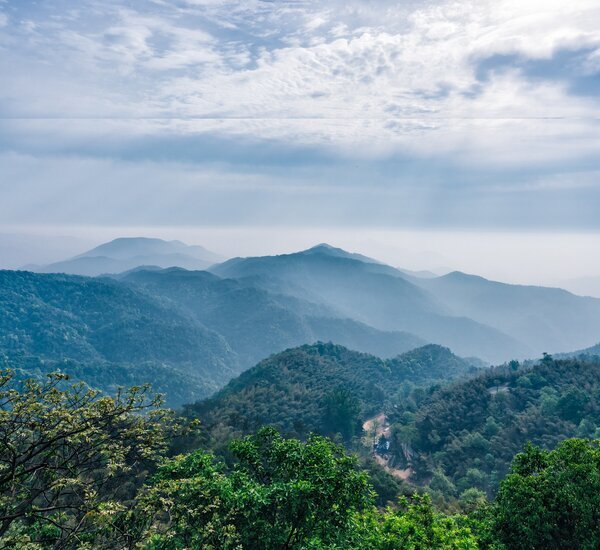
Mogan Mountain.
Main Highlights: What You Absolutely Can’t Miss
Mogan Mountain, known for its stunning natural beauty and rich historical significance, offers international travelers a unique blend of outdoor adventure and cultural exploration. Here are the main highlights you absolutely can’t miss during your visit to this picturesque destination.
Majestic Hiking Trails
One of the primary attractions of Mogan Mountain is its extensive network of hiking trails that cater to all levels of experience. Whether you’re a seasoned hiker or a casual walker, the trails offer breathtaking views of lush greenery, bamboo groves, and majestic peaks. The hike up Mogan Mountain can take around 2-3 hours, rewarding you with spectacular vistas of the surrounding landscape. For those looking for a more leisurely experience, consider taking a scenic drive to the top, where you can enjoy panoramic views without the physical exertion.
Historical Sites
Mogan Mountain is steeped in history, and visiting its historical sites is a must. The Temporary Residence of Chairman Mao is a significant spot that provides insight into the revolutionary leader’s life and times. Nearby, the Sword Pool offers a serene atmosphere intertwined with local lore, making it a perfect location for reflection and photography. Don’t miss the opportunity to explore the remnants of the Chiang Kai-shek Villa, where you can delve into the region’s rich political history.
Picturesque Villages
The journey to Mogan Mountain is just as captivating as the destination. Consider taking a scenic route from Anji, where you can pass through charming villages that showcase traditional Chinese architecture and rural life. These villages are often less crowded, especially in late autumn and early winter, allowing for a peaceful exploration of the local culture.
Diverse Outdoor Activities
Beyond hiking, Mogan Mountain caters to a variety of outdoor enthusiasts. Engage in mountain biking through the rugged terrain, or experience the thrill of horseback riding along designated trails. If you’re looking for something unique, check out the Land Rover experiences offered by local resorts, which can add an adventurous twist to your visit.
Natural Wonders
Nature lovers will appreciate the stunning landscapes of Mogan Mountain. The Bamboo Sea and Wuling Bamboo Forest are must-visit spots, where you can wander through towering bamboo stalks that sway gently in the breeze. The tranquility of these natural wonders is perfect for capturing memorable photographs or simply soaking in the serene environment.
Culinary Experiences
After a day of exploration, indulge in the local cuisine. The area features quaint eateries, particularly along Yin Shan Street, where you can savor traditional dishes such as noodles, dumplings, and other local specialties. Dining here not only satisfies your hunger but also immerses you in the local culture.
Seasonal Beauty
Lastly, Mogan Mountain is best experienced during the late autumn and early winter months. The foliage transforms into a tapestry of vibrant colors, and the cooler temperatures create a refreshing atmosphere for outdoor activities. Plan your visit accordingly to witness the stunning seasonal changes that enhance the mountain’s allure.
With its breathtaking scenery, rich history, and diverse activities, Mogan Mountain is a perfect getaway for international travelers seeking adventure and relaxation. Be sure to take your time to explore each highlight, as they collectively contribute to the enchanting experience of this beautiful destination.
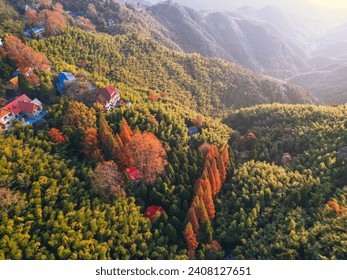
Mogan Mountain.
Planning Your Visit: A Practical Guide
When planning your visit to Mogan Mountain, you’ll want to ensure a seamless and enjoyable experience in this picturesque destination. Nestled in Deqing County, this enchanting area offers a blend of stunning landscapes, rich history, and outdoor adventures. Here’s everything you need to know for a successful trip.
Getting There
Location and Transport:
Mogan Mountain is located approximately 2-3 hours from Shanghai, making it an ideal weekend getaway. You can reach Deqing County via high-speed train or car. The nearest train stations are in Hangzhou and Shanghai, with multiple daily services. If you’re driving, take the G60 or G25 expressways, which provide straightforward access to the mountain and its surrounding attractions.
Local Transportation:
Once you arrive, the most convenient way to explore the area is by using the local shuttle bus service. Be aware that private vehicles are often restricted, especially during peak tourist seasons. The shuttle bus operates from designated transfer stations and provides access to various scenic spots on the mountain.
Best Time to Visit
Seasonal Highlights:
Mogan Mountain is beautiful year-round, but the best times to visit are during the late autumn and early winter months, from late October to early December. The vibrant fall foliage and crisp air enhance the natural beauty of the area, and with fewer tourists, you can enjoy a more peaceful experience. Spring and summer are also lovely, but expect larger crowds during holidays.
What to Do
Outdoor Activities:
Mogan Mountain is a haven for outdoor enthusiasts. Popular activities include:
– Hiking: Trails vary in difficulty and length. A hike to the summit can take 2-3 hours, offering breathtaking views along the way.
– Mountain Biking and Horse Riding: Both activities are available for those looking to explore the terrain in a different way.
– Photography: Be sure to capture the scenic vistas, especially around Mao Zedong’s former residence and the Sword Pool.
Cultural Experiences:
Immerse yourself in the local culture by visiting historical sites such as the former residences of notable figures like Chiang Kai-shek and Chairman Mao. The area is rich in history and offers glimpses into China’s past.
Where to Stay
Accommodation Options:
There are various lodging options around Mogan Mountain, ranging from luxury villas to cozy guesthouses. Some popular choices include:
– Moganshan Lodge: A well-rated lodge that combines comfort with stunning views.
– Baiyun Hotel and Youlan Hotel: These offer budget-friendly accommodations with essential amenities.
– Zheqin Moganshan Villa: Ideal for those seeking a tranquil retreat in nature.
Dining Recommendations
While exploring Mogan Mountain, take a break to savor local cuisine. There are several eateries on Yin Shan Street where you can enjoy simple yet delicious dishes, including:
– Noodles
– Dumplings (suijiao)
– Cooked dishes with rice
Tips for a Smooth Visit
- Plan Ahead: Given the potential for misleading distance signs and variable trail conditions, it’s wise to research your routes in advance and download maps or guides.
- Pack Essentials: Bring plenty of water, snacks, and a first-aid kit, as some hiking areas may lack facilities.
- Dress Appropriately: Weather can change quickly in the mountains, so wear layers and sturdy footwear suitable for hiking.
- Avoid Weekends if Possible: If you prefer a quieter experience, consider visiting during weekdays when crowds are lighter.
Conclusion
Mogan Mountain is a captivating destination that offers a unique blend of nature, history, and adventure. With careful planning, you can experience the best this beautiful area has to offer, making it a memorable addition to your travel itinerary in China. Whether you’re hiking through lush landscapes or exploring historical sites, Mogan Mountain invites you to immerse yourself in its serene beauty.

Mogan Mountain.
Tickets: Prices, Booking, and Tips
When planning your adventure to Mogan Mountain (莫干山), understanding ticket prices, booking options, and some handy tips can significantly enhance your experience. Here’s what you need to know to make the most of your visit.
Ticket Prices
Access to Mogan Mountain typically requires a ticket purchase. Although prices may fluctuate depending on the season and type of access, you can generally expect entry fees to be around CNY 30-60 (approximately $5-$10) per person. For additional activities like guided hikes or horseback riding, prices can range from CNY 130 to CNY 219 (around $20 to $35). It’s advisable to check local listings or booking platforms for the latest rates before your visit.
Booking Options
Several convenient options exist for booking your tickets:
-
Online Booking: Platforms like TripAdvisor or local travel agencies allow you to reserve tickets in advance. This option is especially beneficial during peak tourist seasons when crowds can be larger.
-
On-Site Purchase: Tickets can also be bought at the entrance. However, purchasing on-site may lead to longer wait times, particularly on weekends or holidays.
-
Tours and Experiences: If you prefer a more guided experience, consider booking a private day trip or a guided outdoor tour that includes transportation, which can enhance your visit. Prices for these experiences start from around $190 for a full-day tour.
Tips for Visitors
-
Time Your Visit: To avoid crowds, try to visit during the weekdays or in the early morning. Late autumn and early winter are particularly beautiful times to enjoy the natural scenery with fewer tourists.
-
Transportation: If you’re coming from Shanghai or Hangzhou, consider taking a bullet train or a private car to Mogan Mountain. The scenic drive through the countryside adds to the experience.
-
Plan Your Route: Mogan Mountain has various trails and scenic spots, but navigation may not always be straightforward. Utilize maps or local guides to ensure you reach key attractions without frustration.
-
Bring Essentials: Pack water, snacks, and weather-appropriate clothing, as the temperature can vary significantly throughout the day.
-
Explore Beyond the Mountain: Allow time to discover nearby attractions, such as historical villas and local eateries, for a well-rounded experience.
By keeping these details in mind, you’ll be well-prepared to explore the stunning landscapes and rich history that Mogan Mountain has to offer. Enjoy your trip!
How to Get There: A Complete Transportation Guide
Reaching Mogan Mountain (莫干山) is a journey that takes you from the bustling urban life to the serene beauty of nature, making it a popular getaway for both locals and international travelers. Here’s a comprehensive guide on how to get there, ensuring a smooth transition to this tranquil destination.
Getting to Mogan Mountain
1. By Air:
The nearest major airport to Mogan Mountain is Hangzhou Xiaoshan International Airport (HGH), located approximately 120 kilometers away. This airport receives both domestic and international flights, making it a convenient entry point.
- Airport Transfer Options:
- Taxi: A taxi from the airport to Mogan Mountain will take about 1.5 to 2 hours, depending on traffic. Ensure you have the address written in Chinese to show the driver.
- Shuttle Services: Some hotels in the area may offer shuttle services from the airport, so it’s worth checking with your accommodation.
2. By Train:
For those traveling from Shanghai or Hangzhou, the train is an excellent option.
- From Shanghai:
-
Take a high-speed train from Shanghai Hongqiao Railway Station to Deqing Railway Station. The journey takes about 1.5 to 2 hours.
-
From Hangzhou:
- A direct train from Hangzhou East Railway Station to Deqing Railway Station will take around 30 to 40 minutes.
3. From Deqing Railway Station to Mogan Mountain:
Once you arrive at Deqing Railway Station, you have a couple of options to reach Mogan Mountain:
- Taxi: Taxis are readily available at the station. The ride to Mogan Mountain will take approximately 30 minutes.
- Shuttle Bus: There is a shuttle bus service that operates from the station to Mogan Mountain. This is a cost-effective option and allows for a scenic ride.
4. By Car:
Driving to Mogan Mountain provides the most flexibility, especially if you want to explore the surrounding villages and nature.
- Route: If you’re coming from Shanghai, take the G60 expressway, which leads to Deqing. If coming from Hangzhou, take the G25 expressway.
- Car Rentals: Renting a car can be a great way to explore the area at your own pace. Ensure you have a valid Chinese driver’s license or a permit to drive in China.
Local Transportation at Mogan Mountain
Once you arrive at Mogan Mountain, getting around can be straightforward:
- Shuttle Buses: The area has a shuttle bus service that transports visitors to various scenic spots and hiking trails. Be sure to check the schedule, as it may change seasonally.
- Walking and Hiking: The mountain is best explored on foot, with numerous trails winding through its beautiful landscapes. Just be prepared for varying distances and terrain; some trails may be longer than indicated on maps.
Tips for a Smooth Journey
- Language Barrier: While some signs are in English, having a translation app or a phrasebook can be helpful, especially when dealing with taxis or public transport.
- Traveling Off-Peak: To avoid crowds, consider visiting during weekdays or off-peak seasons, making for a more enjoyable experience.
- Pack Essentials: Bring water, snacks, and a portable charger for your phone, as services can be sparse in some areas of the mountain.
By following this guide, your journey to Mogan Mountain will be both enjoyable and seamless, allowing you to fully immerse yourself in the breathtaking nature that awaits.
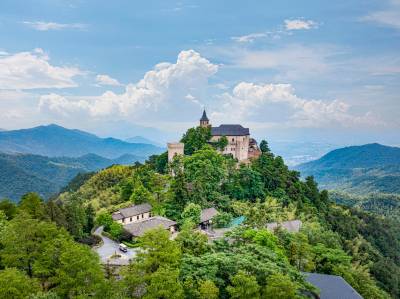
Mogan Mountain.
Local Cuisine and Accommodation Nearby
When exploring the breathtaking landscapes of Mogan Mountain, indulging in the local cuisine and finding comfortable accommodation can greatly enhance your experience. Here are some delightful options to consider while you soak in the beauty of this mountainous retreat.
Savory Local Cuisine
- Yin Shan Street
-
Located conveniently near the hiking trails, this vibrant street is a must-visit for food enthusiasts. Here, you can savor local dishes such as suijiao (meat dumplings), flavorful noodle soups, and various rice dishes. The casual atmosphere makes it an ideal stop after a day of hiking.
-
Moganshan Lodge
-
Just half a mile from the main attractions, this lodge features a bar and an international menu. Whether you’re in the mood for a hearty breakfast or a relaxing dinner, the lodge provides a cozy setting to unwind and recharge.
-
Wild House Cafe
- Situated about 2.9 miles from Mogan Mountain, this cafe offers a range of delightful eats with a focus on fresh, local ingredients. Enjoy a cup of coffee or tea alongside light meals and snacks, perfect for a mid-day break.
Comfortable Accommodation
- Moganshan Lodge
-
Not only does this lodge serve up delicious food, but it also provides comfortable accommodations with beautiful views of the surrounding scenery. The blend of rustic charm and modern amenities makes it a favorite among visitors.
-
Zheqin Moganshan Villa
-
This villa offers a unique blend of luxury and nature, with spacious rooms and stunning mountain views. It’s an excellent choice for those looking to immerse themselves in the natural beauty of the area while enjoying a touch of comfort.
-
Baiyun Hotel
-
A short distance from the mountain trails, Baiyun Hotel is known for its friendly service and clean, comfortable rooms. It’s a practical option for travelers seeking a peaceful retreat after a day of adventure.
-
Youlan Hotel
- This hotel is celebrated for its tranquil environment and proximity to hiking paths. With well-appointed rooms and a welcoming atmosphere, it’s perfect for families and solo travelers alike.
Tips for Your Visit
- Plan Your Meals: As dining options can be limited in some areas, consider planning your meals ahead of time, especially if you have specific dietary preferences.
- Book Accommodations in Advance: Mogan Mountain can be a popular destination, especially during weekends and holidays. Securing your stay in advance will ensure you have a cozy spot to return to after your excursions.
- Enjoy the Local Culture: Don’t miss the chance to engage with locals at eateries and markets; their recommendations can lead to discovering hidden culinary gems!
By embracing the local flavors and resting in comfortable lodgings, your journey to Mogan Mountain will surely be a memorable one.
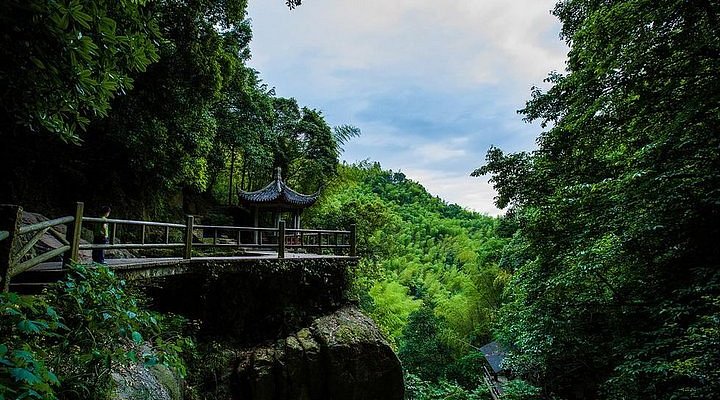
Mogan Mountain.
Frequently Asked Questions
Frequently Asked Questions About Mogan Mountain (莫干山)
1. How do I get to Mogan Mountain from nearby cities like Shanghai or Hangzhou?
Mogan Mountain is conveniently located about 2-3 hours from both Shanghai and Hangzhou. You can take a bullet train to Deqing County, followed by a taxi or shuttle service to the mountain. Many travelers recommend driving from Anji, which offers stunning views of the surrounding countryside.
2. What are the best times of year to visit Mogan Mountain?
The ideal times to visit are during late autumn (October to November) and early spring (March to April). The weather is typically mild, and the scenery is stunning with colorful foliage in the fall. However, winter months can also be beautiful if you enjoy a quieter experience.
3. Are there hiking trails suitable for beginners?
Yes! Mogan Mountain has a variety of hiking trails catering to different skill levels. Beginners can enjoy easier paths with scenic views, while more experienced hikers can tackle challenging routes. Always check trail maps and signage for guidance.
4. What amenities and facilities are available at Mogan Mountain?
Mogan Mountain offers basic amenities, including restrooms and seating areas along the trails. However, be prepared to bring your own food and water. There are a few local restaurants and cafes nearby where you can enjoy simple meals.
5. Is it necessary to book a guided tour to explore Mogan Mountain?
While guided tours can provide deeper insights into the area’s history and attractions, many visitors enjoy self-guided exploration. If you prefer flexibility, consider renting a car or using shuttle services to navigate the area at your own pace.
6. Are there any notable attractions or historical sites in the area?
Yes, Mogan Mountain is rich in history. Key sites include the former residence of Chairman Mao, various villas, and scenic parks like Luhuadang Park. Don’t miss the chance to explore the charming architecture and historical landmarks scattered throughout the region.
7. What should I pack for a day trip to Mogan Mountain?
Pack comfortable hiking shoes, weather-appropriate clothing, and essentials like sunscreen and a hat. Bring snacks and plenty of water, as well as a camera to capture the breathtaking landscapes. A small backpack is handy for carrying your belongings.
8. Can I find accommodation near Mogan Mountain?
Yes, there are several lodging options nearby, ranging from cozy guesthouses to more upscale villas. Booking in advance is recommended, especially during peak seasons, to secure your preferred accommodation. Consider staying overnight to fully experience the tranquility of the mountain.
Final Thoughts on Your Trip
As you wrap up your adventure in Mogan Mountain, take a moment to reflect on the stunning landscape and captivating experiences that await in this serene escape from the bustling cities of China. Whether you found solace in the crisp mountain air, marveled at the breathtaking views, or immersed yourself in the rich history of the area, Mogan Mountain offers a unique blend of natural beauty and cultural depth.
Though you may encounter a few challenges along the way—such as navigating misleading distances or crowded weekends—the reward of tranquility and picturesque vistas is well worth the effort. Each winding path and scenic overlook tells a story, inviting you to explore further and discover the hidden gems nestled within this mountainous paradise.
As you journey back, consider the memories you’ve created and the moments of peace you’ve experienced. Mogan Mountain is not just a destination; it is a reminder of the beauty that exists beyond the urban sprawl, beckoning you to return for another adventure. So, pack your bags and set your sights on the horizon—there’s always more to uncover in this enchanting corner of the world. Safe travels!